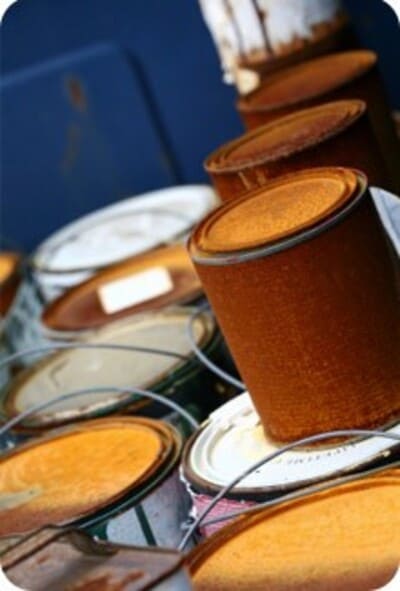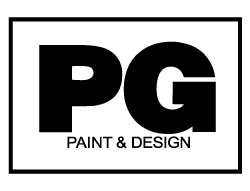Lead was added to paint to make the drying process faster, increase the durability and longevity of the paint after application and act as a protective sealant to help create resistance to moisture and corrosion on the surface to which it was applied.
Homes that were built before the 1950’s most likely have lead based paint in them, as well as approximately 75% of homes that were built before 1978 may contain lead paint since latex paints only began to replace the lead paints after 1970.
Lead paints are dangerous and can lead to many health problems therefore it is extremely important to know that before you begin any type of renovation, removal or repair you may be exposed to the health risks.
What is Lead Based Paint
Lead based paints were used before the 1950’s up until the late 1970’s and were manufactured by the addition of lead compounds into the paint as a pigment to create a specific colour.
The heavy metal additive would help decrease the amount of time it took for the paint to dry, help the paint last longer, resist corrosion and maintain the paint colour’s appeareance.
Where is Lead Based Paint Used
Lead based paints stopped being manufactured around the 1970’s but were still in circulation till around 1978 and were used for painting both the interiors and exteriors of homes.
Many older homes in Ottawa neighborhoods like the glebe, hintonburg, centretown, chinatown, westboro and little Italy were built before the the 1950’s and are vulnerable to containing lead paints.
When exposed to it for long periods of time, it can cause damage to the brain, nervous system and kidneys. Inhalation, ingestion and extreme exposure can cause health hazards and risks such as breathing problems, asthma and even lung cancer, blindness and even death.
Health and Welfare Canada warn that children are especially vulnerable to lead poisoning from paint.
To help protect you and your family from the hazards of lead based paints it is important to know how to find it, how to test for it and how to safely remove it before you start planning any renovations or repairs.
The following is useful and important information to help guide you to keeping yourself safe.
How To Know If Your Home Has Lead-based Paint
Knowing if your home contains lead paint will provide you with the safety in knowing you can breathe easier.
Here are a few questions to ask yourself so that you can tell if lead-based paints may have been used in your house.
- Was your home built before 1960
- Is the paint chipping
- Is the paint peeling
- Is the paint flaking or cracking
If your home was built before 1960 it is more than likely your walls, ceilings, trim, baseboards, doors and windows have been painted with lead based paints.
Lead-free paints only started to come into play in and around the 1990’s after which homes were built with lead free materials and painters used mostly water based paints that were more eco-friendly and considered healthier as they were a lead-free paint product.
If you live in a house built before 1960 similar to older areas in some Ottawa neighborhoods like The Glebe, Little-Italy-Preston Street Area, Lebreton Flats, Westboro, Dow’s Lake, Beechwood-Vanier or Rockcliffe you are better off leaving the lead-based paint alone and not disturbing it.
It is safer to leave it than to remove it because disrupting it, similar to asbestos may create more of a hazard in the air and in your home. It’s not always the case but if you have questions or concerns it’s best to check with our Canadian Government website for health services and information.
How To Test For Lead Based Paints In Your Home
Lead paint can be found inside and outside of homes. The most common places or areas where lead based paints may have been used both either interior and exterior painting is around window sills and trim, the walls, doors and frames, crown molding and on soffits and fascia.
Lead-based paints can be removed following guidelines and precautions and best handled by experts.
The best and safest way to remove lead based paint is by a process called “abatement“.
Abatement is done by hiring professionals to safely remove it so as to reduce the risk of any harm to homeowners and their families. The average cost on average can run anywhere from $5,000.00 to $8,000.00 for a single family home, but it’s worth the peace of mind and the safety of you and your family.
The contractor you hire must be an accredited/certified professional who has the expert knowledge and safe equipment to diagnose the lead issue. Everyone must vacate the property when an abatement procedure is being done.
If you want to attempt removal on your own, be sure to take all precautions before getting started.
How To DIY Check For Lead Paint
Choose a spot like the window sill or frame, or even the front door to scrape away at the layer or layers of paint.
Be sure to wear a face mask that is of the respirator type the typical face masks are not sufficient to ensure that no harmful exposure to tiny particles of dust or fumes are not breathed in.
Wear goggles and gloves and something to cover your clothing such as coveralls.
Ensure that everything is covered before you attempt removal to ensure your safety. While testing and removing you must wash hands every time you leave the area.
You must not eat, drink or smoke while performing the stripping of the lead paint.
Make sure that any furniture, drapes or rugs are either removed or at minimum safely covered with a plastic tarp and wrap it twice over to ensure no dust particles drop onto any of these surfaces.
Seal all air vents and cover windows and doors in plastic double wrapped and taped around the frame. Be sure to cover all doorways, entry ways, vents with the plastic to prevent paint particles from spreading throughout the home.
The use of sanders, heat guns or lamps are dangerous as they create toxic dust and fumes and spread the lead around.
Do Not use anything that may cause a spark or static electricity in the work area.
Set up a fan that blows air out through an open window. This will ensure the area or room you are working in is well ventilated and fumes are blowing away from you.
The area must be well ventilated while using the appropriate stripping product as the chemical is very strong and the fumes should not be breathed in. Always read the labels carefully before beginning use.
At the end of every day as the process may take a few days, hence the expensive abatement fees, the area must be securely sealed and closed off.
Using a hazardous waste container to safely dispose of of the lead based paint scrapings and any other waste like the gloves and goggles and respirator masks.
After all is done and the process is completed it is recommended to wait at minimum a day to ensure all dust particles have settled before entering the room to clean up.
Types of Testing For Lead Based Paints
The different types of testing to see if there is lead in the paint around your home is by sending paint chips to a lab for analysis.
In a lab they will test the sample layer by layer in a protected and isolated area.
Another method to test for lead paint is by X-Ray and fluorescent light which does not disturb the paint surface in any way. Specialized professionals will use a portable detector that will be placed on the surface and take an x-ray of how much lead is contained in the many layers of paint on the surface.
The least effective method of testing for lead paint is the swab test because when the pre-soaked swab that contains chemicals to help detect any lead is swiped or applied to the surface area it can be difficult to detect due to the several layers of paint that may already be present. A swab test does not get deep enough into the surface to definitely detect lead.
Only hire general contractors or painting contractors that have the equipment, the license and certification to do any lead testing.
The Risks of Lead Based Paint
Lead poisoning and exposure to lead in a home poses the greatest risks of poisoning to children as they are the most vulnerable while they are still growing and developing and can easily be damaged by these chemicals.
If you have little ones and are living in an older home where there may be a risk potential you can have the children tested for lead poisoning as early as 6 months of age and repeat it at 12 and 24 months of age.
Lead poisoning can cause low IQ, attention problems, slower developmental and learning disabilities or anemia which is a deficiency of the red blood cells.
Unborn children are at risk if their expecting mother consumes or is exposed to lead. Small amounts that may even be in the dust particles in our homes are dangerous to infants and children.
Removal of lead based paint without proper protection causes a bigger risk to both children and adults as the airborne particles, dust, paint chips or peeling paint can be the causes of lead poisoning.
As long as the paint is not disturbed in any way when doing any renovations or repairs then it poses less of a danger.
Only once the paint is disturbed or broken, chipped or peeled does it become the bigger danger.
There is no current “safe” level of exposure to any lead, so precautions should be taken at all costs to protect your environment.
Is Lead Based Paint Still Used For Painting Homes
Painters who used the lead based paints daily for house painting were put at risk of developing serious health issues.
Most painters would work for 8 hours or more each day and exposing themselves to toxic chemicals that made them ill with nausea. The would suffer from severe and frequent headaches and constant overall feeling of un-wellness.
Not many would wear masks to protect themselves from breathing in the dangerous fumes, but they did not know any better at those times.
It wasn’t public knowledge that the fumes and odours from the paints were toxic chemicals being released into the air they were breathing and that eventually may cause them lung cancer, brain damage or other health problems.
Lead paint is no longer manufactured by painting companies and painters do not have to endure the risks of it’s exposure any more. Today’s paints are mostly water-based, are eco-friendly and safe to use inside people’s homes.
Today’s water based paints are manufactured with safety in mind first and foremost. They are still long lasting, durable and moisture resistant paints and although paints from before the 1980’s were thought to be the strongest and most long lasting, today’s paint manufacturing companies have developed the perfect formulations to provide the best coverage, long lasting and durable paint finish without having to repaint often.

Reduce the Risk of Lead Poisoning
You can reduce the risk of lead poisoning by doing some of the following essential and important steps.
Ensure that there is no paint chipping, peeling, flaking or cracking that small children can touch and possibly ingest.
Take extra precautions if you are pregnant and for small children as the risks are higher for health complications.
Be sure to only hire professional experts to remove any lead paints in your home.
While it can be expensive to hire a professional to perform an abatement procedure the cost is worth the peace of mind for you and your family’s health and well being.
Make sure you have them show you the appropriate documentations, accreditations and certifications to prove they are specialized in the removal of lead to prevent harm from anyone without the knowledge from causing you further harm.
Don’t just take their word for it, investigate and have them produce the documentation before you let them proceed.
If you insist on doing the removal of lead yourself, then make sure to take all the safety precautions listed above.
Wear safety gloves, eye protection, clothing protection and a proper respirator type mask. If you get any of the chemical stripper on your skin – wash it off immediately and always read the instructions and directions before you begin and if you have a serious concern call your local poison control centre or public health office.
Be sure to remove any clothing that has been worn while performing the process of removing or testing for lead immediately and wash separately or completely dispose of it safely as hazardous waste.
Always check with your local municipality on how to dispose of hazardous waste materials.
The City of Ottawa has such disposal areas set up at different locations throughout the year. Check the list of dates and Locations in Ottawa to dispose of hazardous waste and special materials.
If you live in a home that was built after 1990 your house should be free of any lead-free paints as our Canadian Government imposed stricter laws and regulations for both home builders and the paint manufacturing companies since then.
You can read more of the information and documents on the Canadian Health Canada Website regarding questions on contaminants and lead to find all information and facts on lead paint.
Ater you have had the abatement process done and the area is now safe to work with, and you are looking to hire a professional painter for either interior painting or exterior painting contact your local painters in Ottawa.
This post was originally published on May 2, 2017 and edited on 01 June 2021
